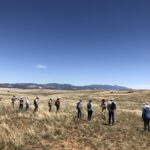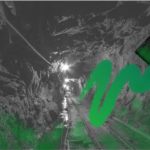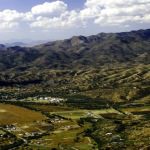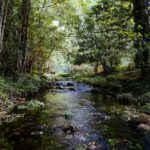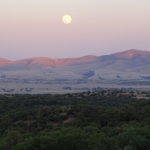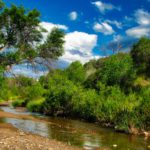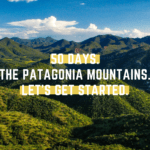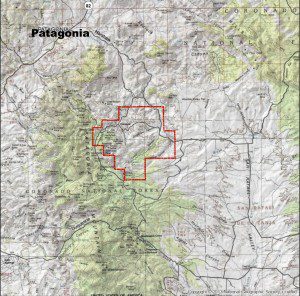
Mar 18, 2014 | Blog
The Coronado National Forest has released the draft Environmental Assessment (EA) for the AZ Mining Inc (aka Wildcat Silver, Arizona Minerals Inc) Hermosa exploratory mineral drilling project in the Patagonia Mountains.
Assist PARA in protecting our precious and imperiled natural resources such as clean water and wildlife, and actively advocate for the preservation of those resources by opposing AZ Mining Inc / Wildcat Silver’s draft EA drilling exploration plan.
- Plan to attend and ask questions at the public meeting hosted by the Coronado National Forest about AZ Mining Inc / Wildcat Silver’s draft Environmental Assessment at the Patagonia Union High School. Monday, March 24 from 6-8pm.
- Submit comments to the Forest Service about AZ Mining Inc / Wildcat Silver’s draft EA drilling plan. Want to know how? Attend PARA’s comment-writing workshop with Jenny Neeley and Sergio Avila on Wednesday, March 26, 4pm – 7pm Open House at Cady Hall.
- Sign a petition telling the Coronado National Forest that an EA is insufficient and a full Environmental Impact Statement is necessary when considering the Hermosa mineral drilling proposal. Sign Petition here.
- Advocate for the protection of our community’s drinking water, natural resources, and distinct, serene rural way-of-life by making a donation. Every single donation assists PARA in our watchdog efforts for the Patagonia area.
Deadline to comment is Monday, April 7, 2014. The Hermosa draft EA is available online at the Forest Service project webpage:http://www.fs.fed.us/nepa/nepa_project_exp.php?project=41158.

Hermosa Drilling Proposal Location
To submit your comments:
Include your name, postal address, title of the project (Hermosa Drilling Project) and signature (or verification of identity upon request.)
Comments may be submitted as follows:
Email: Electronic comments including attachments may be submitted by email in word (.doc), rich text format (.rtf), text (.txt), portable document format (.pdf), and hypertext markup language (.html) to: comments-southwestern-coronado@fs.fed.us with subject: Hermosa Drilling Project.
Facsimile: 520-388-8305, ATTN: Margie DeRose
U.S. Mail: Coronado National Forest, ATTN: Margie DeRose, 300 W. Congress St., Tucson, AZ 85701
Hand-delivery: 6th floor, 300 W. Congress St., Tucson, AZ 85701. Monday through Friday, 8 a.m. to 4:30 p.m., excluding Federal holidays.
Only individuals who submit comments about this proposed project during this public comment period will be eligible to file an objection.
Exposing New Threats
While AZ Mining Inc / Wildcat Silver’s draft EA drilling exploration is up for public review and comment,
the plans that AZ Mining Inc / Wildcat Silver is sharing with investors are for an open pit silver mine in the Patagonia Mountains with the details revealed in a document found on their website:
“Form 43-101F1 Technical Report Pre-Feasibility Study.”
AZ Mining Inc / Wildcat Silver’s Pre-Feasibility Study contains a wide range of information about the open pit mine they want to dig in the Patagonia Mountains. PARA and Earthworks are coordinating to analyze AZ Mining Inc / Wildcat Silver’s pre-feasibility study so that the community can fully understand the impacts of the proposed open pit mine.
Earthworks is a national non-profit organization based in Washington D.C. that is “dedicated to protecting communities and the environment from the impacts of irresponsible mineral and energy development while seeking sustainable solutions. Earthworks stands for clean water, healthy communities and corporate accountability.”
PARA has teamed with Earthworks to develop an independent, peer-reviewed report of the potential consequences of AZ Mining Inc / Wildcat Silver’s open pit mine on our groundwater, the potential for acid drainage contamination, heavy metals pollution, as well as the range of issues associated with air pollution, light and noise pollution.
By teaming with Earthworks and commissioning this report, the dangers of mining in the Patagonia Mountains can no longer be dismissed as opinion, but will present a meaningful and credible analysis highlighting specific and anticipated impacts from the proposed AZ Mining Inc / Wildcat Silver open pit mine.
We are fortunate to have a group of amazing and committed community members and generous donors supporting our work that make everything we do for the Patagonia area possible.
Please consider a gift today to ensure that we have the scientific analyses necessary to actively challenge the Hermosa proposal and AZ Mining Inc / Wildcat Silver’s web of obfuscation. You may contribute securely online at: www.patagoniaalliance.org/donations. Also, please consider a recurring monthly contribution through PayPal.
Every single contribution makes a sizable difference in our organization and ultimately for the community of Patagonia. It is only because of the generous support from people like you that we can undertake this critical work. Thank you!
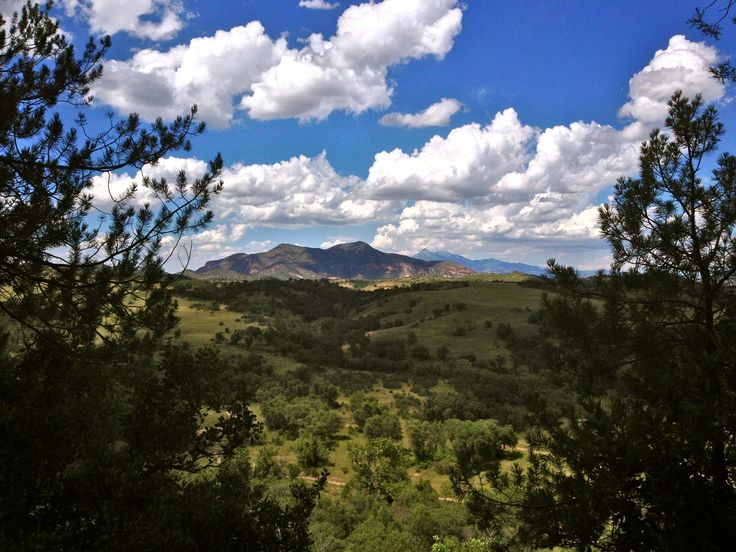
One site of Hermosa Mineral Drilling Proposal: Corral Canyon in the Patagonia Mountains.
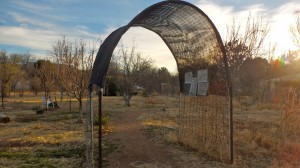
Mar 5, 2014 | Blog
By Colin Treiber
Conveniently located at Fourth and Duquesne, the Patagonia Community Garden offers a resource to all aspiring or experienced gardeners. It is a great opportunity to connect directly to our food, our neighbors, and the earth. By participating in local food growing, we become closer to the land, the community, and life. Through growing our food we take a vested interest in our own health and the health of this planet.
The Patagonia Community Garden offers a variety of plots. Find the space that resonates with you and make it your own. In addition to the standard beds, we will have some raised beds, developed this year to assist those that may find it difficult to plant at ground level.
 The community space is convenient and affordable. Not only are you supported by the knowledge of many other gardeners, but you also have access to necessary tools, water, seeds, and seedlings to make your plot a beautiful and abundant garden.
The community space is convenient and affordable. Not only are you supported by the knowledge of many other gardeners, but you also have access to necessary tools, water, seeds, and seedlings to make your plot a beautiful and abundant garden.
The importance of the community garden—and the space it offers—is manifold. The dryness that has developed over the last several years has intensified recently. Poor agricultural conditions spread across the farmlands of the west. It seems inevitable that our nation’s food production will dwindle, and consumers will feel the burden of increasing prices.
Fortunately, the systems supporting our nation’s food industry are changing. Small, regionally adapted, and sustainable farms are gaining traction. Community gardens and home gardens are sprouting into prominence, and for good reason. As the Community Gardening Association puts it:
“Community gardening improves people’s quality of life by providing a catalyst for neighborhood and community development, stimulating social interaction, encouraging self-reliance, beautifying neighborhoods, producing nutritious food, reducing family food budgets, conserving resources and creating opportunities for recreation, exercise, therapy and education.”
It could be said that the community garden is a doorway to new growth and intimacy in our life. It is an opportunity to develop respect and understanding for all life that surrounds us and an occasion to bring greater abundance into our lives. Let us do the work, together, to nurture this abundance.
The Patagonia Community Garden rents plots at the low price of $5 per month. The garden has a variety of seedlings available for gardeners. They will begin to be available for sale in the garden greenhouse by late March. We look forward to turning the garden into a true community of gardeners and growers eager to share experience, ideas, stories, and food. Please call Martha at 520-394-2752 with any questions. See you in the garden!
Colin Treiber is PARA’s social media magician. Be sure to say ‘hi’ on Facebook or Twitter!
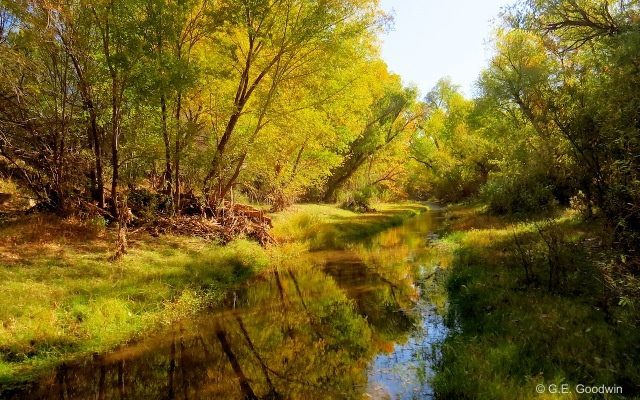
Mar 4, 2014 | Blog
By Michael Stabile
Our municipal watershed is the only source of potable water for the Town of Patagonia and over 300 private well users within a three-mile radius of town. The recent article in the PRT about the drop in the town’s water table and the subsequent discussion of possible water rationing is a wake up call to all residents of Patagonia.
Water is taken for granted; we all just assume that we will be able to turn the tap and water will flow. Thirteen years of drought and climatologists’ model of drier years to come should affect the way we use this precious resource. We should all do our part to conserve water.
At a recent meeting of the town council it was decided to have a further discussion with town residents on cutting back on their water usage voluntarily. Where else might the Town Council look for water protection? How about opposing industrial mining impacts on the community water supply?
The Rosemont project is projected to use 6,000 acre feet of water per year. That’s almost two BILLION gallons of groundwater. The Sonoran Institute’s water study calculated that the effects of this drawdown of the water table could possibly be felt as far away as Patagonia and could in turn, have a great effect on the Sonoita creek drainage.

Sonoita Creek, part of the Patagonia Municipal Water Supply
The AZ Mining Inc (Wildcat Silver) Hermosa project is located in the headwaters of the Harshaw creek drainage. When AZ Mining Inc / Wildcat Silver’s first Preliminary Economic Assessment was issued for investors, the project covered about 3,000 acres. The project has since grown to 13,666 acres, and the open pit has expanded by at least 30%, according to AZ Mining Inc / Wildcat Silver’s Pre-Feasibility Study released in December 2013. When Chris Jones, AZ Mining Inc / Wildcat Silver’s then CEO, gave a presentation to Patagonia residents in 2010, he said that the water usage would be 450,000-700,000 gallons of water per day. Estimating water usage from AZ Mining Inc / Wildcat Silver’s own formula and data (one-half ton water for each ton of ore processed), the Hermosa open pit mine would potentially consume almost two million gallons of water per DAY. By comparison, the town of Patagonia uses roughly 115,000 gallons of water per day. Even if everyone in town conserves water by 20%, it amounts to only 23,000 gallons per day. It will have very little impact if these mines go into operation.
These two mines would use close to three billion gallons of groundwater per year. The Town should take a stronger stance on the real threat to our water supply. We can conserve all the water we want, but it would be nothing in comparison to the amount of water consumed by proposed mining.
We live in a desert. We are in a drought with long-term scientific forecasts for increasing water shortages. Water is simply the most precious commodity we have. Water is far more precious than a few jobs promised to us.
Michael Stabile was the chairman of Patagonia’s Planning and Zoning commission, and at present is a Board member of PARA. He worked with Patagonia Town Manager David Teel to get the Sonoita Creek and Harshaw Creek drainages designated as the Town of Patagonia Municipal Supply Watershed.
Mar 4, 2014 | Blog
By Carolyn Shafer
To be unemployed is scary—especially when one is the head of household and has a child to feed. I have been that person, and I know only too well the frustrations and despair of being unemployed. Many of us, however, have never been in such a situation and know little, if anything, about today’s unemployment problem.
Let’s lay out some statistics that may help. As of January 2014, the nation’s official unemployment rate was 6.6%, a figure federal and state agencies base on “total unemployed as a percent of the civilian labor force.” Out of that, about 5% comprise persons relocating, changing occupations, coming to the end of a seasonal job, or simply not wanting to work.
So where are we locally? According to the Arizona Commerce Authority, as of December 2013, the rate of unemployment in Patagonia was 12.8% (56 people), in Sonoita 6% (28 people) , and in Elgin 16.1% (28 people) . It is unrealistic to expect a 0% unemployment rate. There will always be people who are moving between jobs or who voluntarily choose to be unemployed. Subtracting the 5% that are jobless due to factors listed above, the number of unemployed becomes 34 in Patagonia, 5 in Sonoita and 19 in Elgin. That still leaves people who want to work and can’t find employment, even though there are jobs available. Some jobs can be found in local advertisements or by word of mouth. In addition, there is the Santa Cruz County One Stop Center for Workforce Development, located in Nogales (for information call 520-375-7670). This facility, part of a chain of One Stop Centers throughout Arizona, posts job listings and offers information about career options and instruction on how to conduct a job search, write a resume, and behave during an interview.
In part, the problem of finding employment relates to matching the skills and experience of those seeking jobs to the requirements of the jobs that are available. Some of those who can’t find work need to earn a wage that can support their family but don’t have the skills to qualify for such positions. Others may get turned down for a job because they are overqualified.
Patagonia’s high school seniors who are preparing to enter the job market, are “strongly tied to this community,” according to school counselor Rosann Clark, who has worked in high school counseling for many years. She says that she has never seen any place where students return to their home community at the rate she observes here. The career interests expressed by this year’s graduating class include medicine, environmental sustainability, criminal justice, military service, social service, and ranch management, among others.
In order to stay in their community, these young adults will need to find jobs that suit their career goals within the industries that comprise our local economy. Right now, those industries are primarily ranching, local food production, eco-tourism (hiking, bicycling, birding, etc), retail sales, and wineries. For them, as well as for those in our community whose struggle to find employment is ongoing, our challenge is to define and strengthen a local economy that provides a diversity of livelihoods that are economically stable enough to support all who are willing to work. To be truly sustainable, that economy must also take into account factors contributing to quality of life. Next month, we’ll explore ways of defining a community’s quality of life and evolving a thriving economic model that meets that goal.

Mar 4, 2014 | Blog
By Wendy Russell
The Patagonia Area Resource Alliance and Earthworks are working together to analyze AZ Mining Inc / Wildcat Silver’s Hermosa open pit mine plans so that our community can better understand its likely impacts. Earthworks is a national non-profit organization dedicated to protecting communities and the environment from the impacts of irresponsible mineral and energy development while seeking sustainable solutions. Earthworks stands for clean water, healthy communities and corporate accountability.
Here are some of the outcomes we can expect if the proposed Hermosa drilling project moves forward.
By reading reports that AZ Mining Inc / Wildcat Silver has recently released to investors which contain detailed information about its mining plans in the Patagonia Mountains, one can understand the purposes behind its current drilling exploration proposal of “drilling 24 geotechnical boreholes, 10 exploration boreholes and 12 hydrogeologic boreholes / monitoring wells, and excavating 16 test pits.” Spoiler alert: the sole purpose of the drilling proposal is to advance an open pit mine plan.
One purpose of the monitoring wells, as described in a January 2014 AZ Mining Inc /Wildcat Silver report, is to help “determine the quantity, location and pumping rates required to dewater the pit.” By the second year of mining,AZ Mining Inc / Wildcat Silver’s open pit would go below the water table, and water would be seeping into the pit. In order to mine,AZ Mining Inc / Wildcat Silver would have to continuously pump out this groundwater. The study says, “This creates a cone of depression around the pit allowing mining to take place.” What the report does not say is that this “cone of depression” will lower groundwater levels of the broader landscape. A rough calculation of groundwater pumping required by the mine would be 670 million gallons of water annually. To put this in perspective, the groundwater level for the town of Patagonia has already dropped nearly 18 feet since 2008, and the town uses approximately 42 million gallons per year. Wildcat’s mining would require 15 times that amount.
The geotechnical exploration that is slated to occur primarily in Corral Canyon and Goldbaum Canyon is also for AZ Mining Inc / Wildcat Silver’s open pit mine plans. Corral Canyon is described in AZ Mining Inc /Wildcat Silver’s report as “an optimal location for siting the TSF [Tailings Storage Facility]. Tailings typically contain dangerous chemicals, including arsenic, lead, mercury, and processing chemicals like acids and cyanide. AZ Mining Inc / Wildcat Silver notes that Corral Canyon is “at the top of the watershed.” It is also the top of the Patagonia Municipal Supply Watershed, the sole source of drinking water for the town of Patagonia and an additional 300 area wells.

Corral Canyon in the Patagonia Mountains, proposed site for AZ Mining Inc / Wildcat Silver’s mine tailings piles.
AZ Mining Inc /
Goldbaum Canyon is the planned location for AZ Mining Inc / Wildcat Silver’s Waste Rock Storage Facility. Waste rock is rock that does not contain desired minerals. It often contains iron, which can transform to produce acid run-off when exposed to air and water. This phenomenon is known as acid drainage. Acid drainage is irreversible and is already an ongoing issue from historic mines in the Patagonia Mountains.
The 10 exploration holes proposed in the current drilling plan, whose purpose is to prove the extent of the silver deposits, are essentially the same exploration holes AZ Mining Inc / Wildcat Silver proposed in 2011 but withdrew when PARA, Defenders of Wildlife, and Sky Island Alliance sued the Forest Service over its approval of Wildcat’s plans.
Advancing an Open Pit Mine
By reading AZ Mining Inc / Wildcat Silver’s reports to investors, it becomes clear that the only purpose of the Hermosa drilling proposal is to further develop an open pit mine plan. It is most certainly not a water study done for the benefit of the Town of Patagonia–a concocted assertion put forward by supporters of the mine. A peer-reviewed study of AZ Mining Inc / Wildcat Silver’s mine plan being prepared by PARA and Earthworks will provide the facts and detailed information on anticipated risks to our groundwater, the potential for acid drainage contamination, and heavy metals pollution, as well as the range of issues associated with air pollution, light and noise pollution.
Feb 10, 2014 | Blog
By Wendy Russell
News on the Patagonia mining exploration proposals and more happenings in the Coronado National Forest.
Appeal Process for FS Decision On Regal Resources Expected to Begin
In January, the Forest Service (FS) was slated to issue a Categorical Exclusion (CE) decision for Regal’s exploratory mineral drilling proposal in Humboldt Canyon in the Patagonia Mountains. This would indicate that the FS considers their proposal to be “without significant environmental impacts.”
In the past, a CE decision would allow a company to proceed with their proposed project immediately. However, the FS now offers an administrative appeal process for projects given a CE Decision. Anyone who commented on Regal’s Sunnyside proposal during the initial scoping comment period is entitled to participate in the appeal process. Once the decision is issued, the FS will publish a notice in the Nogales International newspaper, which starts a 45-day window within which to file an appeal to the FS.
PARA plans to assist folks in submitting objections during the appeal process. We will post the workshop date in our Newsletter, Events Calendar, and on our social media sites. Jenny Neeley, former Conservation Policy Director & Legal Counsel for Sky Island Alliance, will be leading that workshop.
In an update from Coronado National Forest Sierra Vista District Ranger Mark Ruggiero, there’s been a delay in issuing the CE Decision for Regal Resources because the mining company is supposedly experiencing financial difficulties.
Release of Wildcat’s Draft EA Anticipated
In another ongoing NEPA process in the Patagonia Mountains, the release of a Draft Environmental Assessment for AZ Mining Inc / Wildcat Silver’s Hermosa exploration proposal is also anticipated. The National Environmental Policy Act (NEPA) requires a “detailed statement” on the impacts of any proposed action that may “significantly affect the quality of the human environment.” Projects with anticipated environmental impacts get classified by NEPA as either requiring an “Environmental Assessment” or an “Environmental Impact Statement.” An Environmental Assessment (EA) is a brief analysis used to determine the significance of impacts resulting from a proposal. The EA is first released in draft form for public review and comment.
Coronado National Forest Sierra Vista District Ranger Mark Ruggiero issued a letter on December 18, 2013, announcing the anticipated Draft Environmental Assessment for the AZ Mining Inc (Wildcat Silver / Arizona Minerals) Hermosa Plan. Its release will trigger a 30-day public comment period before a final decision is issued. The letter also reported that in response to numerous comments received during the first scoping period, revision was made to the Hermosa Plan of Operation (Plan) “in order to reduce identified conflicts as to cultural resources.” The revised Plan is available on the Hermosa Drilling Project page on the Forest Service website: www.fs.fed.us/nepa/nepa _project_exp.php?project =41158. The changes are summarized in Appendix G.
If you have further questions about the Hermosa Plan, contact Margie B. DeRose, Geologist/Hermosa Project Manager, Coronado National Forest at (520) 388-8341 or mbderose@fs.fed.us.
Tell the Coronado National Forest that a full Environmental Impact Statement (EIS) is necessary when considering AZ Mining Inc (Wildcat Silver / Arizona Minerals) proposed Hermosa mineral drilling exploration project. Sign Petition here!
PARA is mobilizing community members to respond to the Hermosa Draft EA comment period. We will post the workshop date in our newsletter, Events Calendar, and on our social media sites. Jenny Neeley, former Conservation Policy Director & Legal Counsel for Sky Island Alliance, will be leading the workshop.
Objection Period for Rosemont FEIS Ends February 14
The Forest Service has released the Final Environmental Impact Statement (FEIS) for the proposed Rosemont Copper Mine Plan. In a new procedure for the Forest Service, an objection period is now available on the FEIS only for those parties who previously submitted scoping comments on Rosemont. The objection period started January 1 and is scheduled to end February 14.
Objections, including attachments, must be filed via mail, fax, email, hand-delivery, express delivery, or messenger service (Monday through Friday, 8:00 a.m. to 4:30 p.m., excluding holidays). Send to: Reviewing Officer, Southwest Region, 333 Broadway SE, Albuquerque, NM. 87102; by FAX to (520) 842-3173 or email to objections-southwestern-regional-office@fs.fed.us. For more information, contact Mindy Sue Vogel, Coronado National Forest, 300 W. Congress, Tucson, AZ, 520.388.8327, msvogel@fs.fed.us
Rosemont is now proposing a high volume of traffic through Patagonia. Rosemont’s FEIS now has added delivery routes for copper concentrate to Guaymas, Mexico. Highway 82 from Sonoita to Nogales is slated to be one of the delivery routes of copper concentrates from the proposed Rosemont mine. Trucks could be expected to make up to 56 round trips per day through Patagonia.
New Forest Management Plan in the Works
The Coronado National Forest (CNF) has prepared a Draft Land and Resource Management Plan, to update the current management plan, which was written in 1986. The public review period has already started, with deadline to comment on February 20, 2014.
UPDATE: The Forest Service has announced an extension of the public comment period. It has been extended an additional 14 days ending on March 6, 2014.
The Draft Forest Plan can be found on the Forest Service website: www.fs.usda.gov/detail/coronado/landmanagement/planning/?cid=fswdev7_018673. If you have questions or would like more information, please call the CNF office at 520-388-8300. Tell the receptionist you want to speak to someone about Plan Revision. You will be connected with one of the Plan Revision Core Team member.
Comments can be submitted via: Coronado Forest Plan Revision P.O. Box 1919 Sacramento, CA 95812, by fax (916) 456-6724 (Subject: Coronado National Forest, Plan Revision); or by email to CoronadoNF@fscom-ments.org (Subject: Coronado National Forest, Plan Revision).
Area conservation organizations have formed working partnerships in order to effect management recommendations to the new Forest Plan. The Coronado Planning Partnership (CPP) formed in 2006 in response to the Coronado National Forest initiating revision of its Forest Plan. The Partnership includes nearly 40 groups and landowners devoted to influencing and overseeing the new Forest Plan. Their mission includes promoting “the protection of wild species, their habitats, and ecological communities, as well as the processes that sustain them, on the Coronado National Forest.” The Partnership has released a report, State of the Coronado National Forest: An Assessment and Recommendations for the 21st Century, that they encourage the public to use to formulate their own comments on the Draft Forest Plan. It can be found on their website: www.skyislandaction.org/state_of_coronado.html.
CPP member, the Arizona Wilderness Coalition, is holding two meeting to encourage folks to comment on the Draft Forest Plan on February 6, 5-7pm, at the Martha Cooper Library 1337 N. Catalina Ave, Tucson and February 13, 6-8pm, at REI 160 W Wetmore Road, Tucson. Please check the CPP website for additional information: www.skyislandaction.org/cpp.html
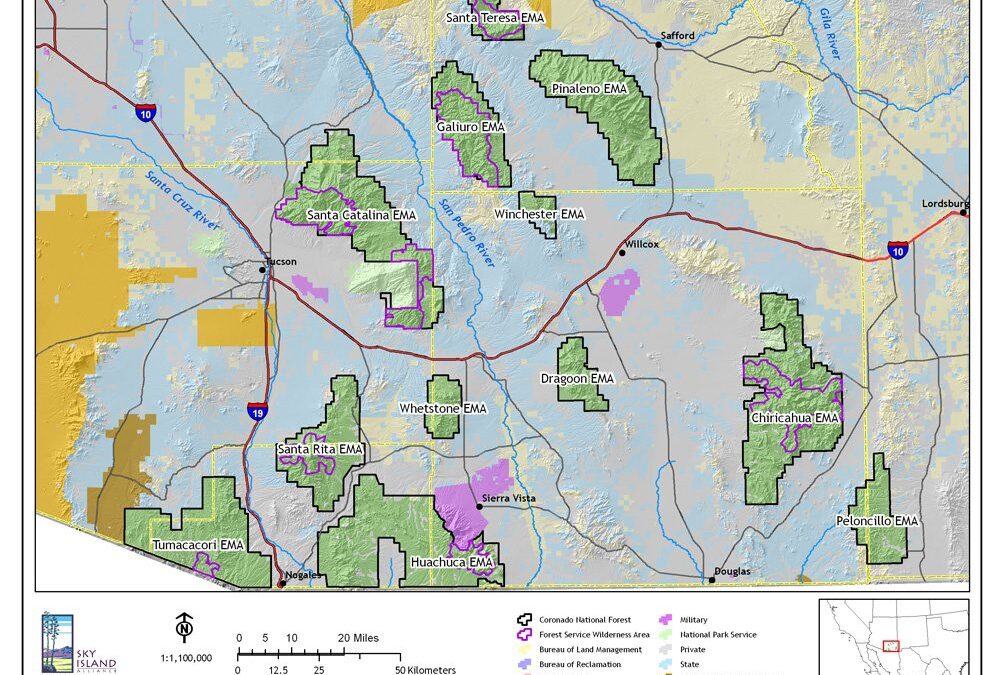
Jan 27, 2014 | Blog
The Coronado National Forest is seeking comments on their Draft Land and Resource Management Plan. The Forest Plan is intended to guide forest management decisions for the next 10 to 15 years. The current management plan was written in 1986. The public review period has already started with deadline to comment on February 20, 2014.
UPDATE: The Forest Service has announced an extension of the public comment period. It has been extended an additional 14 days ending on March 6, 2014.
Area conservation organizations have formed a working partnership in order to effect management recommendations to the new Forest Plan. The Coronado Planning Partnership (CPP) formed in 2006 in response to the Coronado National Forest initiating revision of its Forest Plan. The Partnership includes nearly 40 groups and landowners devoted to influencing and overseeing the new Forest Plan. Their mission includes promoting “the protection of wild species, their habitats, and ecological communities, as well as the processes that sustain them, on the Coronado National Forest.” The Partnership has released a report, State of the Coronado National Forest: An Assessment and Recommendations for the 21st Century, that they encourage the public to use to formulate their own comments on the Draft Forest Plan. It can be found on their website: skyislandaction.org/state_of_coronado.html.
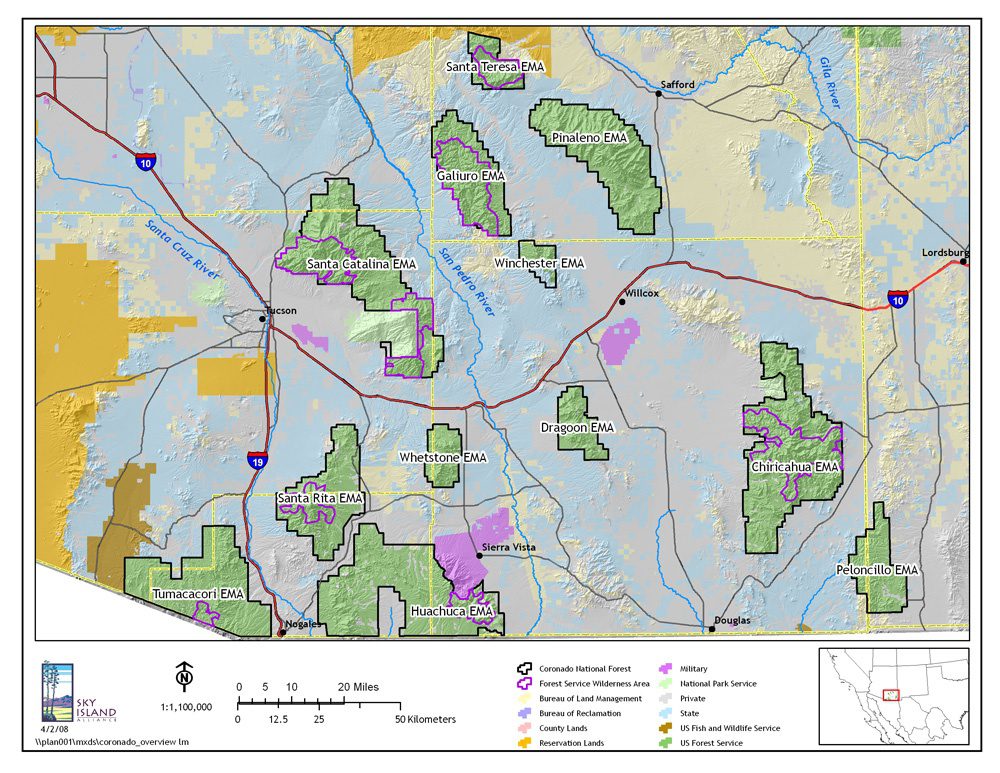
One issue raised by the CPP includes the effects of climate change on forest resources. Managing the Forest to protect watersheds and wildlife in a time of a rapidly changing climate should be top priority in the Forest planning process. The proposed mining activity in the Patagonia Mountains is a major stressor on watersheds and wildlife that would exacerbate the effects of climate change. Strategies for minimizing or mitigating the effects of mining should be written into the plan, with Standards to ensure that these strategies are followed.
Additional issues raised by the CPP regarding the draft Forest Plan that pertain to our area include the activities of Border Patrol. The Coronado National Forest needs to take a strong position that Border Patrol actions will be expected to go through a legitimate NEPA analysis. This position statement should be included in the new Forest Plan. The impacts of migration, interdiction, and Border Patrol infrastructure should be added to the Cumulative Effect analysis when looking at site specific projects in forest areas south of Interstate-10. This does not currently happen and is a major oversight.
CPP member organizations are hosting public meetings to encourage folks to comment on the Draft Forest Plan. Below is a list of meeting dates and times.
Tuesday, January 28th at 5:30pm. Location: TNC Ramsey Canyon Preserve, 27 Ramsey Canyon Road, Hereford (Sierra Vista area). Hosted by The Nature Conservancy. Contact Brooke Gebow for more information, 520-378-2785 or bgebow@tnc.org.
Thursday, February 6th at 5-7pm. Location: Martha Cooper Library, 1337 N. Catalina Ave, Tucson. Hosted by the Arizona Wilderness Coalition. Contact Barbara Hawke for more information, 520-326-4300 or barbara@azwild.org.
Thursday, February 6th at 3pm. Location: Fire House Classroom, Portal. Hosted by the Chiricahua Regional Council. Contact Helen Snyder for more information, 520-558-2413 or helensyder@vtc.net.
Thursday, February 13th at 6-8pm. Location: REI, 160 W Wetmore Road, Tucson. Hosted by the Arizona Wilderness Coalition. Contact Barbara Hawke for more information, 520-326-4300 or barbara@azwild.org.
The Draft Forest Plan can be found on the Forest Service website: www.fs.usda.gov/detail/coronado/landmanagement/planning/?cid=fswdev7_018673
Public comments about the Draft Forest Plan can be submitted via: Coronado Forest Plan Revision P.O. Box 1919 Sacramento, CA 95812, by fax (916) 456-6724 (Subject: Coronado National Forest, Plan Revision); or by email to CoronadoNF@fscomments.org (Subject: Coronado National Forest, Plan Revision)
Jan 24, 2014 | Blog
Manuel Coppola wrote an editorial “Mine permitting takes too long” in the Nogales International (Jan 21, 2014).
He used the proposed Rosemont Copper mine and Wildcat Silver [AZ Mining Inc] exploration proposals as examples of the problem and cites House Bill HR 761 as the solution. The bill would speed up permitting on federal lands to 30 months vs. the current seven to 10 years.
Here’s our response to the editorial:
Perhaps we can lay the blame on the length of permitting on the fact that mines are still governed by the 1872 Mining Law. Mining, as well as the rest of the world, has changed vastly in the last 142 years. What hasn’t changed is that gold, silver, copper and other minerals extracted by mining companies are given away for free because of the 1872 Mining Law. Taxpayers receive no royalties for minerals mined on public land.
Instead of trying to speed up this antiquated law with a bill like HR 761–kind of like making a horse and buggy travel at supersonic speeds–we should reform the 1872 Mining Law to include such improvements as making mining companies pay for the minerals they extract and also paying towards the inevitable toxic burden mines create. Our U.S. Representative, Raúl Grijalva, introduced HR 2467, the Abandoned Mine Lands Cleanup and Taxpayer Fairness Act, a bill to modernize U.S. mining law and establish a royalty program to increase taxpayer return on investment. It also creates an abandoned mine cleanup fund.
The Arizona State Mining Inspector has identified at least 1,200 potentially hazardous abandoned mines in Arizona. Current mines are no better. In the EPA’s 2011 Toxic Release Inventory, Arizona mining companies account for 7 of the top 10 facilities with the largest toxic releases. That’s over 81.4 million pounds of toxic chemicals released into the air, water and land in Arizona.
The proposed Wildcat Silver [AZ Mining Inc] mine is situated at the headwaters of Harshaw Creek in the Patagonia Mountains. Harshaw Creek and Sonoita Creek are the primary sources of the Town of Patagonia’s drinking water. The historic mines in the Patagonia Mountains polluted Harshaw Creek and still produce acid runoff. The size of those historic mines operated over 50-100 years ago are a drop in the bucket compared to the size of the proposed Wildcat Silver mine. Will Patagonia’s drinking water survive a toxic chemical release at the Wildcat Silver mine? Will there be enough water for the town and the Wildcat Silver mine? We should all know the answers to those questions and more before any mining starts in the Patagonia Mountains. The water pollution and acid drainage caused by an open pit mine could pollute Patagonia’s drinking water in perpetuity.
Wendy Russell
Coordinator
Patagonia Area Resource Alliance
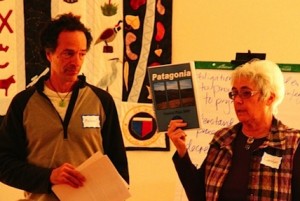
Dec 9, 2013 | Blog
It’s hard to believe that the end of the year is approaching! When 2013 began your friends, neighbors, and colleagues here at the Patagonia Area Resource Alliance (PARA) were gearing up for a busy year promoting the incredible beauty, community and natural heritage of your Town of Patagonia and the Patagonia Mountains. Little did we know what a whirlwind this year would be! The past eleven months have seemingly sped by while we have been advocating to protect this amazing place that we all treasure from the multiple threats that exploratory drilling and mining pose to our small community.
PARA was formed in 2011 to educate and engage the community about the risks and realities of mining, to promote local sustainable economies like ecotourism, to better understand our precious and imperiled natural resources such as clean water and wildlife, and to actively advocate for the protection of those resources in concert with Patagonia’s distinct and serene rural way of life.
You have helped us along the way this year! You have volunteered, come to public meetings, wrote letters to elected and appointed officials; you have taken a class to learn more about the wildlife in our midst and asked poignant questions about the future of our community. Together, we have contributed over 5000 volunteer hours already in 2013!
It has been an amazing and transforming year for PARA, but we have so much more to do! PARA runs on a shoestring budget with the human power of an almost entirely volunteer workforce and just one part-time, coordinator. We’d like to do so much more! Please consider making a donation to PARA this year to support and grow this critical work in our community.
We’d like to share with you just a few of the activities and milestones reached this year through the contributions of all of PARA’s supporters, volunteers and partners:

PARA Board members Michael & Carolyn
Educating the Community, Empowering Ourselves
With a grant awarded from Patagonia® Inc, PARA and Sky Island Alliance (SIA) co-hosted an Advocacy workshop for area residents with national expert Dinah Bear on the National Environmental Policy Act (NEPA). We put on two additional NEPA environmental impact scoping comment workshops on mining proposals and held four more letter writing sessions. The PARA Board also participated in our own workshops with SIA Executive Director, Melanie Emerson. Read more…
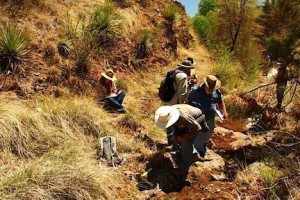
Dr. Van Devender & scientists in Harshaw Creek
Documenting Patagonia’s Natural History
We hosted a BioBlitz in the Patagonia Mountains with Dr. Tom Van Devender of SIA and scientists from all over the Southwest. 418 different species of plants and animals were documented in one weekend–including a new American record of the Willowleaf Oak (Quercus viminea). Results are being used to protect species and habitats imperiled by mining and drilling proposals and can be viewed online at www.madrean.org. Read more…
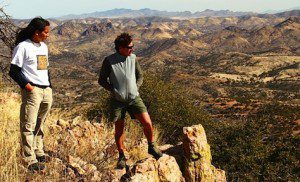
Sergio Avila and John Davis on American Peak
Advocating for Protection Through Tireless Outreach
PARA steadfastly engages elected officials and national organizations regarding the perils that Patagonia faces with proposed mining. This year we conducted tours of proposed mine sites to representatives from the U.S. Senate, Defenders of Wildlife, EARTHWORKS, TrekWest and the media. We remain dogged in our outreach to get and keep attention focused here. Read more…
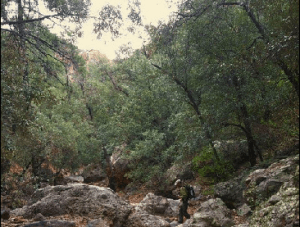
Board member Gooch hiking in Humboldt Canyon
Ensuring Agencies’ Due Diligence
We successfully made the case that the NEPA scoping period for Regal Resources mineral drilling proposal in Humboldt Canyon be re-opened. PARA advocated and reasoned with the District Ranger of the US Forest Service that NEPA decisions should be made using current rather than outdated information. He concurred and ultimately gave us all two additional years to prepare data for more comprehensive scoping comments that can accurately articulate the broadest range of potential impacts. Read more…
To learn more about our 2013 accomplishments and efforts, please take a look at PARA’s “Report to the Community” available on our website at: www.patagoniaalliance.org/our-activities-outreach/
Looking Ahead…
Unceasing Protection of the Patagonia Mountains.
With continued legal assistance from Defenders of Wildlife, PARA strives to hold mining companies, the US Forest Service and all agencies accountable to follow the laws and regulations designed to protect our water, air, surrounding ecosystems and communities. We are positioned to respond to future public scoping notices for exploratory mining proposals scheduled for the Patagonia Mountains.
Sustaining Wildlife Data Documentation and Collaborations
Citizen scientists from the Town of Patagonia continue wildlife monitoring efforts in the Patagonia Mountains focusing on areas immediately at risk by proposed mining activities. Data gathered is used to fight mining proposals through species lists, presence of vulnerable species and habitat analysis. Additional collaborations are ongoing with Defenders of Wildlife, EARTHWORKS, Sky Island Alliance and others to ensure this data is applied to advocacy efforts in the most effective ways.
Increasing Our Outreach for 2014
PARA is strategizing to expand community education activities to grow our base of support and empower concerned residents with potential actions to keep mining out of the Patagonia Mountains. We recognize the need to establish sustainable funding to maintain core functions and seek to expand funding sources. Receiving our own 501(c)(3) non-profit status was just the first step. With additional staff funding in the 2014 budget, we plan to add members to our team to continue to expand our outreach beyond our community boundaries. Our 2013 Financial Report is also available online: www.patagoniaalliance.org/our-activities-outreach/
For A Thriving Community in 2014 and beyond
PARA recognizes that the health and economic prosperity of our community are deeply connected to the wellbeing of the Patagonia Mountains and the Harshaw/Sonoita Creek watershed. They are the source of our drinking water, clean air and the centerpiece for the tourism that drives our local economy.
Please make a Year-End Gift to PARA
There are many needs in our community and many compelling requests for support. We believe one of the most fundamental is protecting our drinking water and our community from the well-known detrimental effects of open pit mining. To that end, PARA is seeking to raise $19,000 by the end of 2013 to support the several ongoing and new initiatives outlined above as we move into 2014. We are fortunate to have a group of amazingly committed community members and generous donors supporting our work, but we are looking to broaden the base of support to ensure not only financial sustainability, but also the ability to impact local, regional and national decision-making on our own behalf. That’s where you come in. The work necessary to make this vision of 2014 a reality is possible only because of your time and your financial support. Please make a gift today.
Please donate to PARA securely online at: www.patagoniaalliance.org/donations/
Every single contribution makes a sizable difference to our organization and ultimately for our community. It is only because of the generous support from people like you that we can undertake this critical work. Thank you!
Your PARA Board and Coordinator
Carolyn Shafer, Cliff Hirsch, Gooch Goodwin, Joseph Nitsche, Katie Flemming-Ballard, Lee Rogers, Michael Stabile and Wendy Russell

Nov 1, 2013 | Blog
Aug 22, 2013 | Blog
By Jenny Neeley, Conservation Policy Director & Legal Counsel of Sky Island Alliance
Introduction: National Environmental Policy Act & Scoping Process
The National Environmental Policy Act (NEPA) requires all federal agencies to prepare a “detailed statement” on the impacts of any proposed action that may “significantly affect the quality of the human environment.”¹ This “detailed statement” can take one of two forms:
- Environmental Assessment (EA), a brief analysis used to determine the significance of impacts resulting from a federal action, or
- Environmental Impact Statement (EIS), a detailed and thorough analysis used for those actions that are expected to result in significant impacts.
Federal agencies are required to go through a public “scoping process” in order to determine the scope of issues that should be addressed in an EA or EIS. Scoping also helps the agency determine the likely significance of an action’s impacts, and whether an EA or an EIS will be required.
What to Include in NEPA Scoping Comments
The scoping period is the best time to identify all the issues and resources that the agency must consider when preparing an EA or EIS, as well as the potential impacts the proposed action may have on those resources.
Identify resources likely to be impacted.
This includes all the resources and values that are likely to be impacted by the proposed action, including:
- Air quality
- Water quality and quantity
- Wildlife and vegetation, including endangered, threatened, and other special status species
- Wildlife movement corridors
- Soils
- Watersheds Floodplains, wetlands, and riparian areas
- Cultural and Archeological resources
- Visual resources and scenic values
- Dark skies
- Recreation
- Transportation and traffic
- Public safety
- Socioeconomic Impacts
Identify potential impacts resulting from proposed action.
The scoping period is also the best time to identify all the potential impacts that are likely to result from the proposed action. The potential impacts will vary depending on the specific activity being proposed, and can include ecological, aesthetic, historic, cultural, economic, social, and health related impacts. When assessing potential impacts, the agency must look at:
- Direct impacts: “are caused by the action and occur at the same time and place;”
- Indirect impacts: “are caused by the action and are later in time or farther removed in distance, but are still reasonably foreseeable (e.g., induced changes in land use patterns, population density, and related effects on natural resources and ecosystems);” and
- Cumulative impacts: “the impact on the environment which results from the incremental impact of the action when added to other past, present, and reasonably foreseeable future actions, regardless of what agency or person undertakes such actions. Cumulative impacts can result from individually minor but collectively significant actions taking place over a period of time.” ²
REMEMBER: You don’t have to do the analysis for the agency. At the scoping stage, you just need to identify the issues and potential impacts that must be analyzed. You should also submit any research or supporting documentation that is relevant to assessing the significance of the project’s potential impacts. The agency is obligated to consider this material when drafting the EA or EIS.
———————————–
1 National Environmental Policy Act (NEPA), 42 USC § 4332(C) (1982).
2 Council for Environmental Quality, NEPA Implementing Regulations, 40 CFR § 1508.8 (2010).

Aug 16, 2013 | Blog

Upcoming Forest Service Public Meeting in Patagonia
August 20th informational meeting on AZ Mining Inc / Wildcat Silver’s Hermosa mining exploration proposal.
The Coronado National Forest will host a public meeting on Tuesday, August 20th from 6:00 to 8:00 p.m. in the Patagonia High School Cafeteria, 200 Naugle Avenue, Patagonia, AZ. The purpose of the meeting is to provide an overview of the proposed Hermosa Drilling Project including the National Environmental Policy Act (NEPA) environmental review process. Forest staff will be available to answer questions.
Oral scoping comments will not be solicited nor accepted at the meeting.
Click for Overview of AZ Mining Inc / Wildcat Silver Hermosa Project |
|
| Reminder: Today is the deadline for public comments on the Sunnyside mining exploration proposal in Humboldt Canyon.
Please include the project name (Sunnyside Project) in the subject line and email to:comments-southwestern-coronado@fs.fed.us
Please also share your comments with info@PatagoniaAlliance.org. Congressman Raul Grijalva is interested in reading our public comments on the floor of the US House of Representatives. We will forward your comments to his office. |
|
|
|
|
|
 |
| Write Comments on AZ Mining Inc / Wildcat Silver Hermosa Mining ProposalAugust 22nd, 4pm – 7pm
Open House
PARA and Sky Island Alliance are teaming up again to co-host a workshop on how to comment effectively on the AZ Mining Inc / Wildcat Silver Hermosa mining exploration proposal.
We’ll be at Cady Hall in Patagonia from 4pm to 7pm. Come anytime for information and instruction on how to comment. Refreshments will be served.
This is the public’s opportunity to comment to the Forest Service regarding all potential aspects of this mining exploration project and its potential impacts: water, impacts to both quality and quantity; air quality; wildlife and vegetation; soils; cultural and archaeological resources; visual and scenic values; dark skies/light pollution; recreation; pubic safety; transportation/roads; interaction of social and economic factors; cumulative impacts (those that increase in significance over time).
Click for more information.
|
|
|
|
|
| Summary of Patagonia Town Council Meeting on August 14thThe community of Patagonia united to contribute to a meaningful and civil discussion regarding the Town of Patagonia Council agenda item: “Discussion of Support of AZ Mining Inc aka AZ Minerals [Wildcat Silver] Hermosa Drilling Project Plan of Operation.”
The theme often repeated was the inappropriateness of the Town voting to support a business at all. Issues ranged from the agenda item being beyond the legal scope of the Town Council’s duties to the likelihood that such a vote could alienate a portion of the community–and therefore the Town’s position should remain neutral.
One point made was that the only entity that would benefit from Town approval is AZ Mining Inc / Wildcat Silver in aiding its attempts to attract would-be investors. Also emphasized was the Town’s need to fully participate in the National Environmental Policy Act Scoping period in order to hold legal standing regarding any decisions made by the Forest Service on the Hermosa project.
Everyone agreed on the need for a water study. But the study proposed by Wildcat Silver is only to determine the hydrology surrounding their planned open pit mine. It will not give the Town critical information such as determining the flow rate of Harshaw Creek and Sonoita Creek which both supply water to our town wells. A water study conducted by an unbiased, third party would be far more valuable than any study presented to the Town by a mining company. |
|
|
|
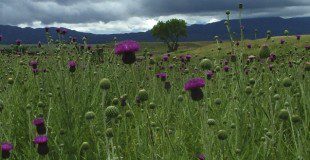 |

Charitable giving to the Patagonia Area Resource Alliance allows you to make a tangible difference by empowering us to continue our efforts to stop new mining activity in the Patagonia region.
Your donations also make it possible for us to organize community involvement and action so that we can protect the Patagonia Mountains, our water and our communities.
We are committed to our mission and grateful for your support. Click here to donate now.
PARA is a volunteer-based, non-profit, 501(c)(3)-pending organization, based in Patagonia, Arizona. All or part of your donation may be tax deductible as a charitable contribution. Please check with your tax advisor. |
|
|
|
|
|
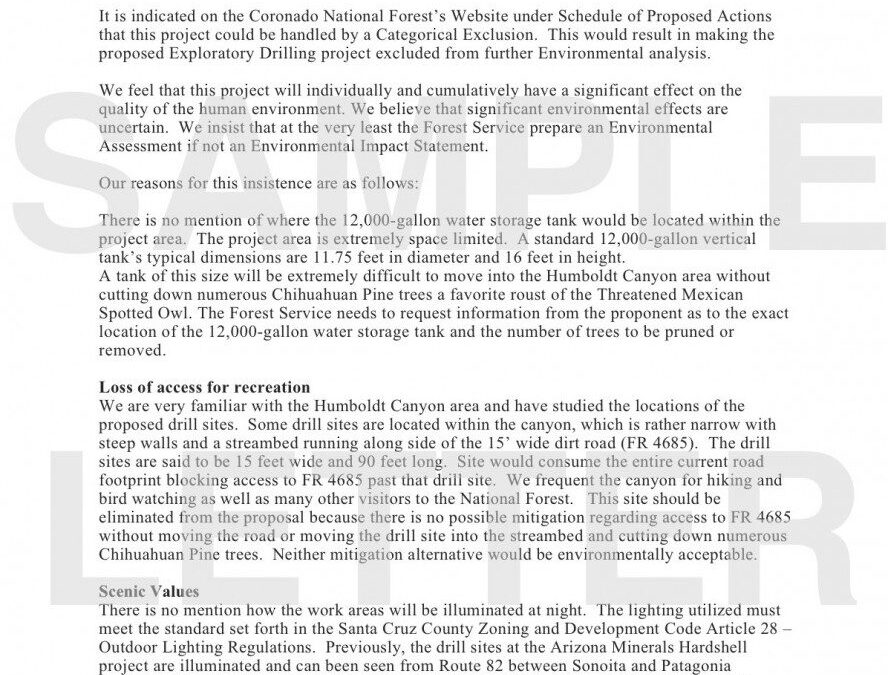
Aug 9, 2013 | Blog
By Jenny Neeley, Conservation Policy Director & Legal Counsel of Sky Island Alliance
Introduction
The National Environmental Policy Act (NEPA) requires federal agencies to go through a public “scoping process” in order to determining the scope of issues to be addressed in an environmental assessment (EA) or environmental impact statement (EIS). To start the process, the agency must issue a Notice of Intent and invite public input on the scope of issues to be examined. The US Forest Service is required to go through a public scoping process for all proposed actions, including those that the Forest proposes to categorically exclude from NEPA analysis.
When agencies give proposed projects a “categorical exclusion” from NEPA, the agency is not required to take a close look at the environmental impacts of the project. Below is more information on how the public can engage in the scoping process and make the case that the project should not be categorically excluded, but should instead be subject to an EA or an EIS under NEPA.
What is a Categorical Exclusion?
A categorical exclusion (referred to as ‘CE’ or ‘Cat Ex’) is a category of actions established by each individual agency that are exempted from the NEPA requirements to prepare an EA or EIS because they are considered to not have a significant effect on the human environment, either individually or cumulatively.¹ A proposed action may be categorically excluded from preparing an EIS or EA only if it fits into one of these categories and “if there are no extraordinary circumstances related to the proposed action.”
Challenging Categorical Exclusions in Scoping Comments
There are four steps to writing effective comments that challenge the use of categorical exclusions:
1. Check the mining plan to make sure the proposed action fits into the categorical exclusion for mineral exploration activities: “Short-term (1 year or less) mineral, energy, or geophysical investigations and their incidental support activities that may require cross-country travel by vehicles and equipment, construction of less than 1 mile of low standard road, or use and minor repair of existing roads.”² If the proposed action does not meet these parameters, then it cannot be excluded from NEPA.
2. Determine whether there are any “extraordinary circumstances” that relate to this proposed action: Resource conditions that are considered in determining whether extraordinary circumstances exist are:
- Federally listed threatened or endangered species or designated critical habitat, species proposed for Federal listing or proposed critical habitat, or Forest Service sensitive species; View list for Patagonia Mountain area.
- Flood plains, wetlands, or municipal watersheds;
- Congressionally designated areas, such as wilderness, wilderness study areas, or national recreation areas;
- Inventoried roadless areas or potential wilderness areas;
- Research natural areas;
- American Indians and Alaska Native religious or cultural sites, and
- Archaeological sites, or historic properties or areas.³
3. If one or more of the above resource conditions exist in the project area, you must demonstrate that:
- There is a cause-and-effect relationship between a proposed action and the potential effect on the resource conditions considered “extraordinary circumstances,” and
- The degree of potential effect on those resources – including cumulative effects – raises uncertainty over whether those effects are significant. If you can raise this uncertainty about the significance of potential impacts, you can make a good case for precluding the use of a categorical exclusion.
4. Show that the impacts of all past, present, and reasonably foreseeable future actions in the project area raise uncertainty about the significance of the “cumulative impacts” of this project. The Forest is required to examine the impacts of all past, present, and reasonably foreseeable future actions in the project area, regardless of what agency or entity is undertaking those actions, and determine the potential for cumulative impacts. When a project is proposed to receive a cat ex, you can make the case for preparing an EA by raising uncertainty over the significance of these effects.
Asking for an EA and Identifying Scope of Issues
After making the case that a categorical exclusion is inappropriate, don’t forget to also identify the scope of issues you think should be addressed in the EA you are asking the agency to prepare. It is important submit comments identifying the full range of resources and issues that may be impacted by the proposed action. These resources and issues generally include:
- Water quality
- Water quantity
- Air quality
- Soils
- Vegetation and wildlife
- Threatened and endangered species
- Wildlife corridors/wildlife movement
- Cultural resources
- Visual resources and scenic values
- Dark Skies
- Recreation
- Public safety
- Transportation
- Socioeconomic Impacts
- Cumulative Impacts
Remember: you don’t have to do the analysis for them. At the scoping stage, you just need to identify the issues they must analyze. You should also submit any research or supporting documentation that is relevant to assessing the impacts of this project on the identified resources. The agency is obligated to consider this material in its assessment.
Other online resources:
PARA NEPA Resources page
USFS NEPA Handbook: Categorical Exclusions
Citizen’s Guide to NEPA
Challenging Categorical Exclusions in Scoping Comments: Letter Template
[Date]
[Address]
[Re: Project name]
Open your letter with something personal describing why you care about this place: “I am a resident of Patagonia;” “I often visit the Patagonia Mountains for recreation/employment/tourism;” “I own a property in the area;” etc.
This project should not qualify for a categorical exclusion from NEPA. a) Extraordinary circumstances in the project area raise uncertainty about the project’s impacts; and b) The potential for cumulative impacts raise uncertainty about the project’s impacts. (See above for more information on how to make this argument effectively.)
The agency [Forest Service] should prepare an environmental assessment to analyze the impacts of this project on all the resources in the project area. (See above for sample list of resources and issues to identify.)
August 15, 2013 public comment deadline for Regal Resources Sunnyside mining exploration proposal.
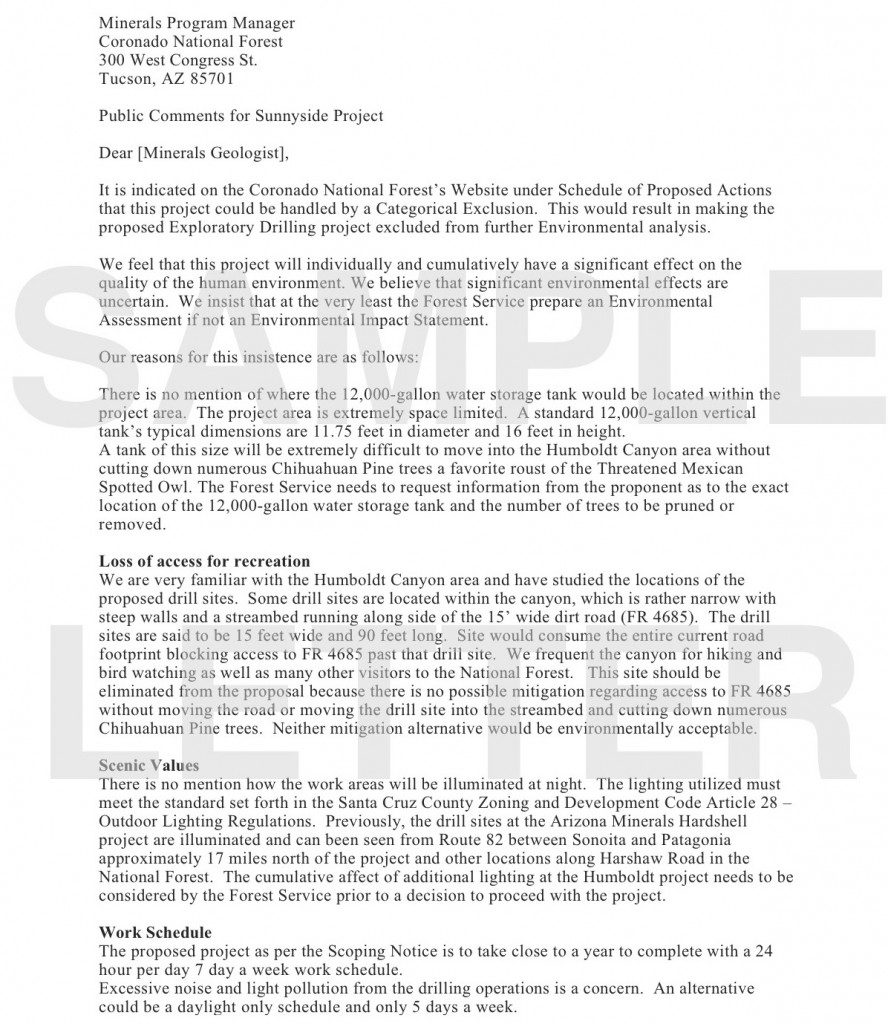
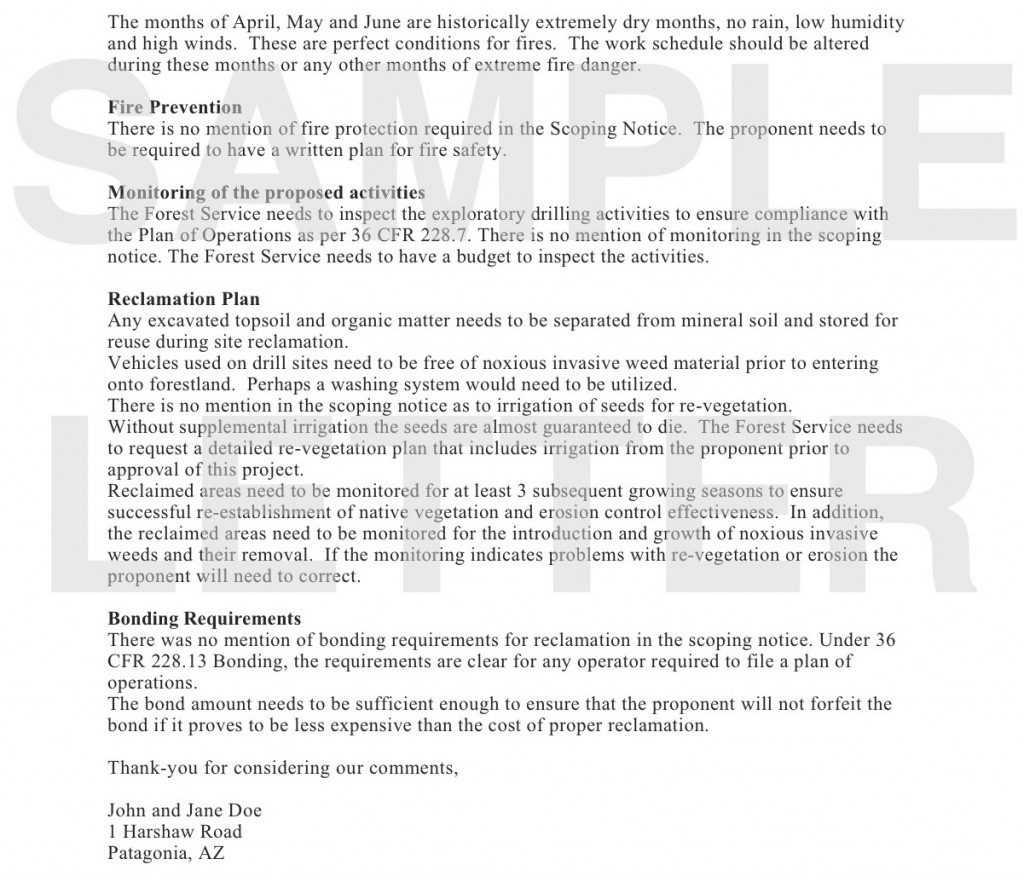
———————-
1. Council for Environmental Quality (CEQ) Regulations for Implementing the National Environmental Policy Act (40 CFR 1508.4). Available at nepa.gov/ceq_regulations/regulations.html
2. USFS NEPA Handbook; FSH 1909.15; 36 CFR 220.6(e)(8)). Available online at http://www.patagoniaalliance.org/wp-content/uploads/2013/08/US-Forest-Service-NEPA-Handbook_Categorical-Exclusion-regs.pdf
3. USFS NEPA Handbook, FSH 1909.15; 36 CFR 220.6(b). Available online at http://www.patagoniaalliance.org/wp-content/uploads/2013/08/US-Forest-Service-NEPA-Handbook_Categorical-Exclusion-regs.pdf
Aug 6, 2013 | Blog
By Wendy Russell
The Forest Service has re-opened the public comment period for the Regal Resources Sunnyside mining exploration project in Humboldt Canyon. This is the same project that had an earlier scoping period back in November 2011. According to the scoping notice from the Coronado National Forest, Sierra Vista District Ranger Mark Ruggiero has “decided to offer another scoping period in conjunction with this formal comment period to ensure that public involvement is current and comprehensive.”
Regal Resources Inc. is a junior mining company based in Canada. Its property in the Patagonia Mountains consists of 295 claims on the Coronado National Forest totaling approximately 5,900 acres. The scoping notice states that the Sunnyside mining exploration project is for 6 exploratory drilling sites to collect core samples to assess potential copper mineralization in Humboldt Canyon. The operation would run 24 hours a day, 7 days a week. Water would be hauled in and access for the project would be from the town of Patagonia by way of Harshaw Road, aka National Forest System Roads 49 and 58. Access within the project area would be via NFSR 812 and 4685.
According to the scoping notice, “if you submitted comments in 2011 regarding the Sunnyside project, you MUST advise us [Forest Service] in writing that you would like your previous comments to be considered as responsive to the legal notice for eligibility to appeal the decision: you do not have to resubmit your comments.” If you did not receive the scoping notice and would like to receive that information from the Forest Service contact Patrick Morton, FS Geologist, at (520)388-8348 or pmorton@fs.fed.us.
Link to Scoping Notice for Sunnyside mining project
Link to Sunnyside project map
Link to Sunnyside Plan of Operation
Link to USFS project page for Regal Resource’s Sunnyside project in Humboldt Canyon.
The Patagonia Area Resource Alliance co-hosted a comment writing workshop with Sky Island Alliance on Thursday, August 1 at 6:30 PM in Cady Hall to assist folks who want to comment on the Sunnyside project. It is our only opportunity to get the Forest Service to examine all aspects of this mining exploration project that may concern us as local citizens who live and enjoy recreation around the Patagonia Mountains. Remember, you’re only eligible to challenge the decision rendered by the Forest Service regarding this exploratory drilling project if you submit a comment within the 30-day comment period. The estimated deadline for comments is August 10, 2013.
We will be posting comment suggestions and a template from that workshop.
If you wish to submit a comment:
Please include the project name (Sunnyside Project) in the subject line of your response and/or email.
Comments may be submitted as follows:
Email: comments-southwestern-coronado@fs.fed.us
Facsimile: 520-388-8305, ATTN: Patrick Morton
U.S. Mail: Coronado National Forest, ATTN: Patrick Morton, 300 W. Congress St., Tucson, AZ 85701
Hand-delivery: 6th floor, 300 W. Congress St., Tucson, AZ 85701
Monday through Friday, 8 a.m. to 4:30 p.m., excluding Federal holidays
Also note: the Wildcat Silver Hermosa mining exploration project opened its public comment period in early August.
Aug 2, 2013 | Blog
By Carolyn Shafer
PARA board member
Published in the Patagonia Regional Times, August 2013.
“We Dig Jobs” is a new bumper sticker seen around town. Recently released reports state that while employment has improved in Santa Cruz County there remains a high unemployment rate–so let’s talk about jobs.
Around 1960 the last mines closed. Jobs evaporated over night. While ranching continued in Eastern Santa Cruz County, the economy was rebuilt around tourism. The region became known as a world wide destination for birders and a destination for USA visitors especially our fellow Arizonans because of its significant biological diversity. Building on the strong economic base of ranching and tourism, other industries such as local food production, wineries (USA Today lists this region as one of the top ten wine trails in the country), eco-tourism and heritage tourism are contributing to the economic growth and employment opportunities.
In December 2011, the Mountain Empire Business Survey identified 217 small local businesses that employ about 800 people. Economist Dr Tom Powers analyzed the survey and concluded that 51% of business sales and about half of the jobs are attributable to landscape and cultural amenities (hiking, biking, hunting, birding, equestrian activities, ranches, relaxation getaways, health and wellness, historic and cultural sites, artisans and artists, dining, shopping). Mining will destroy the landscapes and the cultural amenities and as a result about half the business revenue and half of the 800 existing jobs will be gone.
Corporate representatives of AZ Mining Inc (Wildcat Silver) were recently quoted in the media saying that the Hermosa mining project will bring 250 jobs. However, it appears likely that this community could lose 400 existing jobs because of mining. It is doubtful that many of the 200+ local businesses could survive a 50% loss of revenue likely to result from destruction of landscapes by mining. AZ Mining Inc (Wildcat Silver) projects that the open pit mine would operate for 16 years assuming best case scenario. After which, once again those mining jobs would be gone.
One thing we can do is proactively engage our local unemployed citizens in vocational and educational assessments and other employment services provided by Santa Cruz County Career One Stop. Let’s create a community reality of an economic model that emphasizes job stability, environmental sustainability, equitable economic justice, and the well-being of the individual and the family as more important than the rate of financial return for only a select few.
AUTHOR’S FOOTNOTE: I asked the AZ Mining Inc (Wildcat Silver) representative for specific information regarding the classification of those jobs including salary ranges and qualifications (education, experience, skills). I have been told that information will be provided in a document currently being reviewed for release to the company’s investors. Wildcat Silver’s website states that the production jobs will be 12-hour shifts on a rotating night /day shift schedule (four night shifts, three days off, three day shifts, one day off, three night shifts, three days off, four day shifts, seven days off.)
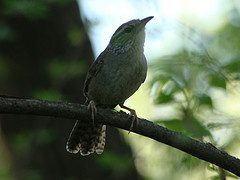
May 28, 2013 | Blog

Sinaloa Wren ©Matthew C. Brown
The Patagonia Mountains are full of biological diversity. The mountains cross the border into Mexico, creating a virtual bridge for plant and animal species to the south. Consequently, we have many species from Mexico that are only found in the United States in Patagonia. Birders already know that the Sinaloa Wren can be seen in the States in Patagonia, Arizona. The Patagonia Mountains also provide important wildlife corridors and habitat for large mammals such as jaguars, ocelots, bears and mountain lions. To catalog and substantiate this biodiversity, we hosted Patagonia BioBlitz Days.

BioBlitz Activities with Arizona Public Media ©Glen E Goodwin
What’s a BioBlitz? It’s an intense biological survey conducted in a short amount of time with the goal to record as many specimens as possible. We hosted a BioBlitz for the Patagonia Mountains with Sky Island Alliance and scientists from all over the Southwest on April 26-28, 2013. A crew from Arizona Public Media was on hand on Friday to record some of the action. See “Nature by the Numbers” by Tony Paniagua on Arizona Illustrated Nature.
The data collected from the BioBlitz is being posted onto the Sky Island Alliance database called the Madrean Archipelago Biodiversity Assessment (MABA) Project. The project is managed by Dr. Tom Van Devender who brings a wealth of knowledge about the sky islands from a lifetime of research on both sides of the border. Preliminary plant results from the Patagonia BioBlitz can be found here. We’ll make further announcements as more data is interpreted and posted to the MABA website.
Read the Final Report: Patagonia BioBlitz
Partial funding for the Patagonia BioBlitz was received by a grant from Patagonia®. We plan to use the Patagonia BioBlitz findings to block new mining activity in the Patagonia Mountains.
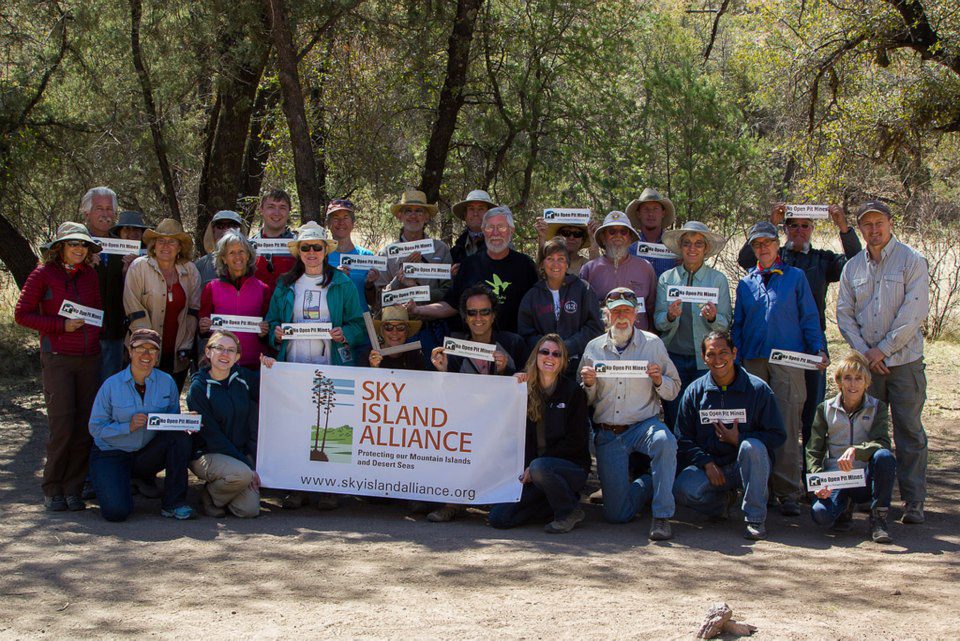
May 7, 2013 | Blog
Guess What? The Patagonia Mountains are Alive: Tracking Wildlife in the Patagonia Mountains.
By Cliff Hirsch

Tracking Workshop participants.
photo ©Tim Cook
Did you know that the Patagonia Mountains are the home to Coati, Grey Fox, Rabbit, Deer, Skunk, Puma, Bobcat, Ringtail cats, Black Bear, Coyote, Turkey, Cottontail, Javelina and the elusive Jaguar and Ocelot?
This April, I had the privilege of attending a 4 day Wildlife Tracking Workshop in the Patagonia Mountains. The Workshop was hosted by the Patagonia Area Resource Alliance and run by the extremely talented and knowledgeable staff of Sky Island Alliance, Jessica Lamberton-Moreno and Sergio Avila. There were 28 attendees from the Patagonia area, Tucson, Sells, Yuma and New Mexico. The workshop taught us the techniques for identifying Wildlife tracks, locating tracks, measuring tracks and gaits, and determining what animal had left that track. The workshop was held in Corral Canyon with side trips throughout the Patagonia Mountains. We found and identified tracks of most the mammals listed above. When no tracks could be found we learned to look for other signs of mammals such as scat (the bear does s… in the woods), scratches on tree trunks and kill remains. Also included in the workshop: GPS setup and use, Map reading, plaster casting of tracks and techniques for setup and monitoring remote wildlife cameras.
Lunch time at the campsite consisted of great food and guest speakers: Rod Mondt, one of the founders of Sky Island Alliance who spoke on environmental advocacy; George Farmer, owner of Axle Canyon Preserve in New Mexico; and Wendy Russell, member of Patagonia Area Resource Alliance, who explained the plight of the Patagonia Mountains due to renewed interest for mineral extraction.
Each evening around the campfire, PowerPoint presentations were shown on the van” movie screen”, thanks to one of the attendee’s generator.
All the attendees received Certificates of Completion and were invited to become part of the Madrean Archipelago Biological Assessment Team which is compiling a database of all mammals in the region. In order to be part of the Assessment Team we were taught proper track measuring, photography and documentation procedures and techniques.
I recommend the Sky Island Wildlife Tracking Workshop to anyone interested in life in the Mountains. The workshops are held each spring and fall. The Fall Workshop this year is at the Cobra Ranch in Aravaipa Canyon, September 26-29, 2013. The Sky Island folks loved the Patagonia Mountains so much they said they would be back to do it again.

Apr 15, 2013 | Blog
With permission, we’ve reprinted Matt Clark’s Blog from Defenders of Wildlife regarding the TrekWest journey.
Matt Clark, Southwest Representative

Patagonia Mountains – rich habitat for wildlife in the southwest ©Matt Clark
If you are anything like me, you might get to feeling pessimistic sometimes because of all of the alarming news we hear about the growing extinction crisis, climate change and a plethora of other wildlife woes. The renowned conservationist Aldo Leopold once wrote, “One of the penalties of an ecological education is that one lives alone in a world of wounds. Much of the damage inflicted on land is quite invisible to laymen. An ecologist must either harden his shell and make believe that the consequences of science are none of his business, or he must be the doctor who sees the marks of death in a community that believes itself well and does not want to be told otherwise.” Since Leopold’s day, science has deepened our understanding of these ecological wounds and their consequences for wildlife – and has also revealed promising solutions.
Though most understand the damage done when a species’ habitat is destroyed, we often overlook the damage that comes from breaking the habitat into smaller pieces or crisscrossing it with roads and other barriers. When native habitats become too small, isolated and fragmented, they can’t support healthy wildlife populations.
Here in Defenders’ Southwest office, we’ve partnered with the Wildlands Network and a dozen or more of North America’s most respected conservation organizations to protect, connect and restore a contiguous network of lands along the spine of the Rocky Mountains and associated ranges, basins, plateaus, and deserts – all the way from Alaska’s Brooks Range to the Mexican Sierra Madre Occidental in Mexico. These habitats need to be stitched back together so that wildlife can survive in a crowded world, and can shift their ranges as climate change rapidly alters the environment.

A family of wild pigs trapped at the border fence that cuts across their habitat (©Matt Clark)
To bring attention to wildlife corridor conservation, outdoor adventurer John Davis is biking, hiking and paddling along a 5,000-mile journey from Mexico to Canada, highlighting the need for wildlife habitat and corridor protection on a local and international scale – a journey dubbed TrekWest. Along the way, John is pointing out projects by organizations, private landowners and decision-makers that have helped to protect or restore vital habitats and corridors. I joined John Davis and our local conservation partners on the trail for the second regional leg of his continental journey. We guided John to important places in the Sky Islands Ecoregion – one of Defenders’ focal landscapes – to highlight promising projects that aim to maintain and restore habitat connectivity.
While TrekWest is mostly about highlighting solutions and successes, we were also compelled to show John some of the obstacles to wildlife in the Sky Islands. We brought John to see the antithesis of habitat connectivity: the 20-foot-tall border wall that Customs and Border Protection has constructed along vast swaths of the border with Mexico, straight through prime wildlife habitat. Defenders led the charge against this massive project at the time, but sadly the construction continued without public input and via the waiving of important laws. On previous trips to the border, I have witnessed the wall’s effects on wildlife. I photographed a family of javelina (wild pigs) cut off from the Mexican part of their range, and have seen deer and mountain lions similarly stymied. Some of the more rugged, north/south wildlife corridors that span the border do not yet have walls constructed across them, and we hope they will never be built.

Jaguars like these are just beginning to make their way back into Arizona – but disconnected habitats make it a challenge.
Another threat we could not sugar-coat for John is a number of mining proposals in the region. We visited the site of the proposed Rosemont Copper Mine in the Santa Rita Mountains, just south of Tucson. If this open pit mine proceeds despite strong local opposition and legal challenges, it would destroy and fragment habitat for a wide range of species, including the jaguar. We also brought John to the Patagonia Mountains (a crucial, cross-border mountain range) and showed him the site of the proposed “Wildcat” silver mine. If constructed, this would be the second largest silver mine in the world – and like Rosemont, it would destroy thousands of acres of habitat and sever its connections for many wildlife species including the endangered jaguar, ocelot, and lesser long-nosed bat and the threatened Mexican spotted owl. Defenders is working with partner organizations such as Sky Island Alliance and the Patagonia Area Resource Alliance to prevent this mine from becoming the newest ecological wound to the region.
On the positive side, I helped to guide John on a hike to tour a local wildlife linkage that connects the Santa Catalina Mountains to the Tortolita Mountains. The connection between these two habitats was severed by urban development and a heavily traveled state highway (SR 77). The Coalition for Sonoran Desert Protection, of which Defenders is an active member, has worked tirelessly with stakeholders to protect the threads of habitat that remain intact. The Coalition also helped convince the Regional Transportation Authority to build wildlife underpasses, and an ambitious overpass, to enable wildlife to pass safely across SR 77. Once built, these wildlife-dedicated structures will give deer, fox, coyote, bobcat, mountain lion and other wildlife a way to cross from one habitat to the next without putting themselves or drivers at risk.

The bridge over Davidson Canyon allows wildlife to cross under Interstate 10 (©Matt Clark)
Later, I met up with John and staff from Sky Island Alliance on a hike through Davidson Canyon, a crucial wildlife corridor that links the Rincon Mountains and Pima County’s Cienega Creek Natural Preserve with the Santa Rita Mountains. The canyon is particularly important because the highway’s bridge gives wildlife a place to safely cross beneath Interstate 10. We documented many tracks near the bridge left behind by roadrunner, opossum, fox, coyote, bobcat and cougar. Black bear have also been documented utilizing this corridor. Sky Island Alliance is working with the transportation department and the county to ensure that this corridor remains functional for the free-flow of wildlife movement. These are but a couple of shining examples of how we are collectively working together to ensure wildlife has room to roam.
I believe that the most important factor that has changed since Aldo Leopold’s time is that we are no longer alone as we face these ecological challenges. We are a part of a strong and growing network of well-informed, passionate people working together toward a common and noble cause: the conservation and restoration of our natural heritage. For me, connectivity conservation fuels the flame of hope. It is a way we can give wildlife a fighting chance to survive in an increasingly fragmented and warming world.

Apr 7, 2013 | Blog
With permission, we’ve re-posted John Davis’s Blog from the Wildland’s Network TrekWest Journey.
John’s Blog from TrekWest
Posted on Apr 2, 2013
With Patagonia Area Resource Alliance, Sky Island Alliance and Defenders of Wildlife, Early March

“A veteran fence-cutter myself (always legally, of course, removing old barbed wire from various wild way lands where I work back East), I could almost feel the sense of liberation as Sergio described taking the fence out of a wildlife corridor…”
Lobo stood with us symbolically atop American Peak as we gazed worriedly down on the proposed site of the Wildcat Silver Mine (below right). Lobo is a promise, an artistic expression of hope crafted by a Zuni sculptor. This small figurine and others (including jaguar and ocelot, which are also both native to southern Arizona but jeopardized by roads and the border wall) we bear with us on this wild walk-about. The proposed Wildcat Silver Mine is a curse visited upon the good wildlife and people of the Patagonia Mountains and surrounds. If the Wildcat Silver Mine plans are approved, the Southwest will lose a critical wildlife corridor, vibrant waters, and scenery to live for.
Patagonia Area Resource Alliance (PARA) and kindred groups aim to prevent this theft. Together with Defenders of Wildlife, Sky Island Alliance, and others, PARA is organizing local and state residents to oppose this mine. Please help them.
Our day was not all about threats and alarms, though. PARA leaders showed me Madrean oak/pine woodlands primordial in their beauty, and talked with me also about their work on sustainability. This work includes pollinator advocacy led by naturalist and writer Gary Paul Nabhan, with whom I serve on the Board of Directors of Wild Farm Alliance http://wildfarmalliance.org. As Gary’s research has shown, southern Arizona is a continental leader in diversity of bees, ants, bats, hummingbirds, and other animal groups that include pollinators critical to both native and cultivated plants. The great diversity of pollinators in the Sky Islands owes to its topographic, geologic, and vegetative diversity.
So does the Madrean Archipelago’s exceptional diversity in mammals, about which Sergio Avila of Sky Island Alliance told us as we strode the Patagonias. From atop American Peak, Sergio pointed out how these mountains, modest in stature but immense in diversity, reach south into Mexico and how parallel ranges also provide key corridors for animals like jaguars and ocelots. Sergio noted that the Sky Islands is one of the few areas north of the tropics where one can find four native cats: bobcat, cougar, ocelot, and jaguar, all of which are wide-ranging and need big wild interconnected habitats.
Sergio also pointed to the border wall, cutting across the San Rafael Valley and into the mountains, threatening to sever the connections that keep these mountains so rich. Some of the rugged areas along the border thus far have been spared the building of impassable fencing; and it should be an international conservation priority to keep these wildlife corridors wall-free. Sergio had a bit of heartening news for all of us: He and other Sky Island Alliance folks had recently spent some time, at the request of the Bureau of Land Management, removing the barbed wire along the US/Mexico border where agencies deemed a simple vehicle barrier to be enough of a deterrent to drug traffickers. A veteran fence-cutter myself (always legally, of course, removing old barbed wire from various wildway lands where I work back East), I could almost feel the sense of liberation as Sergio described taking the fence out of a wildlife corridor.
TrekWest Action: Please don’t forget, to help fight these threats, you can go to trekwest.org and sign the petition to Say YES to protecting our Fast-Disappearing Wildlife Habitat Corridors, which we will deliver to decision-makers who can speed up this important conservation need. Also support the worthy organizations featured in this blog!
For the Wild,
John
Your kind consideration of a DONATION– all to help TrekWest inspire as many people as possible to support wildlife corridors and to keep up with basic supplies and equipment — is much appreciated.
Also, thank you SPONSORS!

Mar 18, 2013 | Blog
By Dave Ellis
March 18, 2013
Two news items of interest appeared on March 4. First, the announcement by Arizona Mining Inc (Wildcat Silver), “Wildcat Silver to Acquire Riva Gold”. Second, a new report by business and financial advisers Grant Thornton UK LLP that has found that “Junior Mining Companies [like Arizona Mining Inc / Wildcat Silver] are facing significant shortfalls in working capital, posing a major concern to future growth prospects.” Read full article: Money worries weigh on juniors at PDAC
With a little internet research, it is clear that the two items are closely related. First, the Arizona Mining Inc / Wildcat Silver announcement has lots of qualifiers. So, the reality is that Arizona Mining Inc / WS and Riva Gold have simply entered into a Letter of Agreement providing for the acquisition by Arizona Mining Inc / Wildcat Silver of all Riva shares at 4.7 Riva for 1 Arizona Mining Inc / WS share. Riva has C$8.1 million cash and no mineral properties or activities. So it ain’t a done deal. “The proposed acquisition remains subject to, among other things, “– the negotiation and execution of a definitive agreement and applicable shareholder and regulatory approvals.”
Further, Riva agreed to provide a C$1 million loan to Arizona Mining Inc / WS at prime + 4% maturing on 12/31/2013. So WS gets some cash to drill some more holes on or around the Hermosa property. Between the lines, this means Arizona Mining Inc / Wildcat Silver has not been able to attract investor interest and, in desperation, has to accept limited, expensive financing for further exploratory drilling.
Second, Arizona Mining Inc / WS is not alone in failing to attract precious metals investors (suckers?) There are about 1600 Junior mining companies around the world. Neither Arizona Mining Inc / WS nor Riva are even listed as Juniors! The Grant Thornton report states that “Low cash balances, coupled with broader pressures around regulatory risks and rising operating costs, have put some Junior miners at a disadvantage in the capital markets and undoubtedly some of the poorly managed entities will go bust in the near future.” (We can only hope!)
The Back Story
It is helpful to step back and look at the money game in relationship to Gold & Silver. From Wikipedia, we learn that the silver market was 490 million oz (Moz) industrial, 167 Moz jewelry, and 101 Moz investment in 2010. Industrial use transitioned gradually from pre-digital camera photography to RoHS lead-free electronic solder and Photovoltaic solar panels over a 10 year period. The jewelry market is even more stable. Thus, the “real” uses of silver metal evolve slowly. In contrast, the market for silver & gold investment changes as fast as money moves around. Like — Fast! As with the housing market from 2002 to 2008, the precious metals market is currently experiencing an investment bubble.
The graphs clearly show both the Gold and Silver “bubbles” now in their terminal downward phase.

Silver Prices
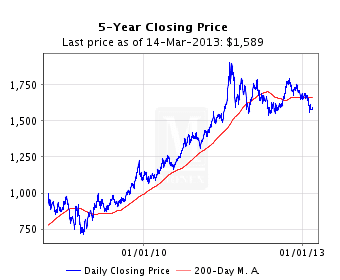
Gold Prices
Check out: http://www.google.com/finance?q=TSE%3AWS&ei=TF5DUZnFENL0rAGheQ
You will see that the price of WS stock mirrors http://www.monex.com/prods/silver_chart.html
PARA’s activism forces Arizona Mining Inc / WS to spend precious $ to move forward. So our efforts make a difference!
Notes: Silver ($45/$10 = 4.5) more volatile than Gold ($1800/$750 = 2.4). Both fast investment bubbles are due to “flight-to-safety in uncertain times”. Euro economies are stabilizing. Therefore, waning gold-silver investment goes down, so junior silver miners are struggling – duuuh!





 The community space is convenient and affordable. Not only are you supported by the knowledge of many other gardeners, but you also have access to necessary tools, water, seeds, and seedlings to make your plot a beautiful and abundant garden.
The community space is convenient and affordable. Not only are you supported by the knowledge of many other gardeners, but you also have access to necessary tools, water, seeds, and seedlings to make your plot a beautiful and abundant garden.






























